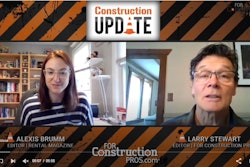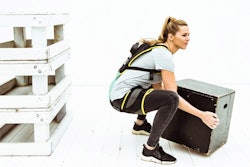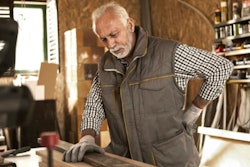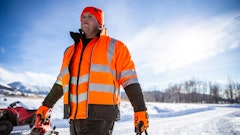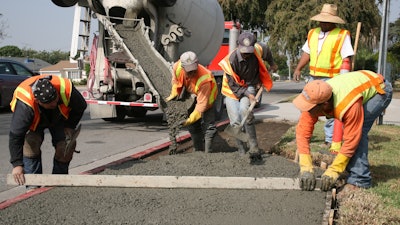
America has a back pain problem. This is especially true in the world of active workers and the numbers are staggering. More than 50 million adults in America suffer chronic back pain. Americans lose 264 million days of work a year because of back pain and American companies lose $100 billion per year in both direct ($50 billion) and indirect ($50 billion) costs. While the financial burden is heavy on companies, the physical burden on active workers is even more significant.
It’s no surprise that reported back pain for construction workers is 20% higher than all other industries, according to a study by the Center for Construction Research and Training (CPWR). What might be more surprising is that construction workers are higher than the average across all age groups.
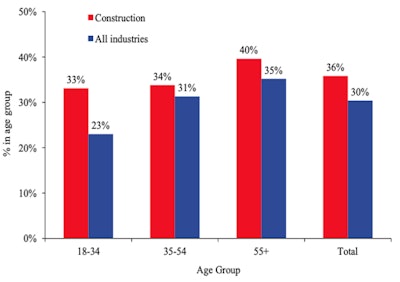 Rate of self-reported back pain among construction workers, by age group 2015 (all employment). Source: Center for Construction Research and Training (CPWR) Chart Book (6th edition): Fatal and Nonfatal Injuries – Back Injuries in Construction and Other Industries.HeroWear LLC
Rate of self-reported back pain among construction workers, by age group 2015 (all employment). Source: Center for Construction Research and Training (CPWR) Chart Book (6th edition): Fatal and Nonfatal Injuries – Back Injuries in Construction and Other Industries.HeroWear LLC
No matter how young or old construction workers are, they are at risk of having back pain run their lives.
Back pain Isn’t the problem. Back pain is the result of the problem. The real problem lies in the strain, fatigue, and wear and tear caused by the high frequency of forces and awkward postures that the spine must endure during the necessary movements construction workers perform on a daily basis.
It also can’t be emphasized enough that the cause isn’t simply heavy lifting. The reality is other common movements, such as twisting, bending, and reaching, also play a major role in the back pain crisis that plagues the construction industry.
The Back-Breaking Work to Build Concrete Structures
The key is to continuously figure out better ways to keep people safe, healthy, and injury-free. We can do better than approaches that only help a little, and reactive ones when it’s too late.
A day in the life of a cement mason or laborer is grueling. Construction workers are exposed to numerous risk factors for lower back pain such as heavy lifting and high forces, as well as prolonged and repetitive awkward postures or motions. Some good examples include bending at the waist to lift and move concrete placement hoses and finish a pour.
These tasks and their associated physical demands can increase wear and tear on the spine and surrounding tissues, which over time can develop into painful and costly injuries, lost time, and disability.
The CPWR has a formula called an “exposure score” which shows what percent of the job consists of lifting, bending, twisting, or other repetitive motions. According to the report, the average concrete worker spends a whopping 71% of an average day performing motions that increase the risk of fatigue-based back injuries. But why are these seemingly common motions–such as bending over–so bad for the back?
 The CDC reported that back pain is the most prevalent work-related health problem, and OSHA estimates that employers pay nearly $1 billion per week for direct workers’ compensation. On the other hand, back-assist exosuits can provide a custom fit suit that can take 30% of the load off a worker’s back.HeroWear LLC
The CDC reported that back pain is the most prevalent work-related health problem, and OSHA estimates that employers pay nearly $1 billion per week for direct workers’ compensation. On the other hand, back-assist exosuits can provide a custom fit suit that can take 30% of the load off a worker’s back.HeroWear LLC
The Science Behind Back Pain
The back functions as a lever, with the spine working as the back’s fulcrum with your body weight (and anything you’re holding) on one side, and your lower back muscles on the other. Muscles on the back pull down to keep the front of your body upright – so even standing upright, your back muscles are engaged for stability.
When you lean forward (even a couple of inches), muscles all along your back and legs engage and pull on your upper body with about 100 pounds of force so you don’t fall forward. Again, that’s only bending forward a couple of inches holding no extra weight.
When you bend all the way down to finish concrete, there’s often 300-500 lbs. of force pulling on the muscles and ligaments in the lower back. Considering that bending and lifting are done so frequently throughout every single day, it’s no wonder that back pain is such a big problem.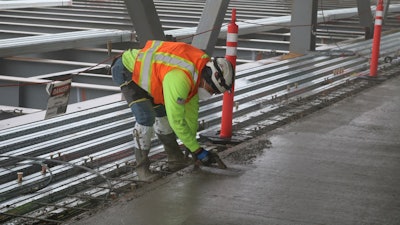 Exosuits, especially passive ones, actually aid in lifting, bending and reaching.HeroWear LLC
Exosuits, especially passive ones, actually aid in lifting, bending and reaching.HeroWear LLC
Identifying the Problem Doesn’t Always Fix the Problem
Of course, recognizing the problem is only half the battle. Figuring out solutions is what matters. Strategies currently being used are either reactive measures (e.g. surgery, opioids, ibuprofen, physical therapy, massage therapy, hot packs, ice, etc.), not realistic (e.g. having workers use perfect body mechanics every time), or are ineffective for injury prevention.
Safe bending and lifting techniques or warming up before work should be encouraged. Reactive interventions are necessary when injuries happen. Ultimately, every valid approach that seeks to prevent injuries or take care of people when they suffer one should be considered as part of comprehensive health, ergonomics, safety, and return to work program.
Assistance isn’t the only attribute to consider when looking at exosuits; freedom of movement and comfort are also critical on any construction site.
The key is to continuously figure out better ways to keep people safe, healthy, and injury-free. We can do better than approaches that only help a little, and reactive ones when it’s too late. Previous injuries are the most important factor in predicting a future recurrence of injuries, and lower back injuries are no exception.
That’s why it’s incredibly important to try and address back injuries before they happen.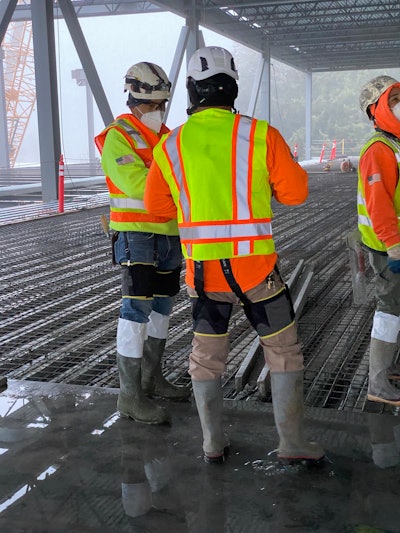 Modern exosuits are designed with lightweight, practical wearability in mind, while still offering workers significant assistance for bending and lifting jobs.HeroWear LLC
Modern exosuits are designed with lightweight, practical wearability in mind, while still offering workers significant assistance for bending and lifting jobs.HeroWear LLC
One Possible Solution: The Exosuit
Many companies have already embraced exosuit technology to help take the burden off their active workers. While some may think of exosuits as something out of Iron Man, in reality, there are practical, inexpensive exosuits that can be effective ways to fight against back strain and fatigue. Exosuits now on the market are valuable assets for construction workers because they can provide that much-needed assistance without compromising comfort or freedom of movement.
The assistance provided during those long days of repetitive heavy lifting and prolonged awkward postures make exosuits worthy of adoption for construction companies. However, assistance isn’t the only attribute to consider when looking at exosuits; freedom of movement and comfort are also critical on any construction site.
Working on a jobsite doesn’t lend itself to lugging around heavy wearables that get in the way or have limited battery life. Construction workers are active most of their shift. Modern exosuits are designed with that kind of lightweight, practical wearability in mind, while still offering workers significant assistance for bending and lifting jobs. Sites like ExoskeletonReport.com offer balanced, valuable, and accessible information for those interested in learning more about these solutions.
It’s clear that the construction industry—like America as a whole—has a back pain problem. That’s a result of construction workers’ everyday movements, such as lifting, bending, and twisting. These unavoidable movements put a target on workers’ backs and increase their risk of injury. Modern wearables like exosuits offer a possible way to address the issue and potentially help construction companies fight this billion-dollar back pain problem and promote a healthier and safer jobsite.
About the Author
Matt Marino is director of ergonomics and human factors at HeroWear.





